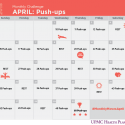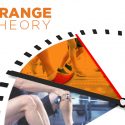The “fat burning zone”: A fitness MYTH
If you’ve ever stepped on a cardio machine such as a treadmill, bike, or elliptical, you’ve probably noticed the “fat burning” or “weight loss” program choice, which can be very appealing because it is as easy as a press of a button, and requires no additional effort.
“If you want to burn and lose fat, you must exercise at a low intensity steady state only” — does this sound familiar? It’s been one of the most common myths promoted by magazines, the news, and social media. The theory is that long, slow, low-intensity aerobic exercise has more benefits for weight loss compared to higher intensities.
When you click on the “weight loss” program choice, the cardio machine automatically adjusts the speed, grade and duration for you. If you didn’t know any better, you’d probably step off that treadmill after 50 to 60 minutes feeling satisfied and accomplished that you just burned a TON of fat, right? Actually, that’s not the case. Here are four reasons why the “fat burning zone” doesn’t actually burn fat.
1. The fat you want to burn is stored fat
There are many misconceptions about when your body uses or “burns” fat for energy the most. It is true that at a low intensity your body uses more fat for energy than it would at higher intensities. But “fat” here is referring to the type of nutrient, not the extra belly fat you want to get rid of. This “fat burn” applies to sitting, lying down, and sleeping. Therefore, if it were true that low-intensity exercise was optimal for fat loss, then all we would have to do is sleep to lose the weight. This, we are all aware, is not true!
2. Heart rate zones are not one size fits all
Not all heart rate zones are created equal. When the chart on the treadmill tells you to aim for a heart rate zone between 120 bpm and 140 bpm, this can be different for everyone. Depending on an individual’s resting heart rate and cardiorespiratory fitness level, 130 bpm can feel like a stroll in the park for one person, but for another can feel like they are pushing with all they’ve got. Choose a heart rate that is at least moderate intensity for YOU (talk but can’t sing, and feels hard to very hard). Also, don’t be afraid to sweat!
3. It’s all about energy balance
When wanting to lose fat, it’s all about the energy balance (energy = calories). Energy balance is calories in versus calories out.
Even though at lower intensities your body may be using fat for energy, exercising at higher intensities burns significantly more calories in HALF the time. For example, sprinters and athletes do not exercise at low intensities but generally have a lower BMI and body fat percentage. Exercise accounts for the “energy out.” “Energy in” is the food you eat throughout the day. It doesn’t matter where your body is burning calories/using energy from, but how many calories you are burning overall. If you are burning more calories than you are consuming, weight loss will take place.
4. Interval training works!
When it comes to getting the most bang for your buck, interval training wins. It is the most effective way to burn the most calories in the shortest amount of time. Less than half of Americans actually reach the recommended amount of exercise per week (150 minutes), with time rated as the number-one barrier. Want to lose fat, maintain muscle mass, and burn the most calories? Choosing a higher intensity (whether by speed or grade), combined with a lower intensity during the same workout, is better than low-intensity steady state cardio. You can also cut your exercise session time in half, which makes your time more efficient and offers the same benefits!
Also, don’t feel trapped on the treadmill. You can take part in internal training outside, on the StairMaster, elliptical, and even bike. Mix up your routine to keep it fun! As always, make sure to warm up before engaging in any exercise. Whether a light walk or dynamic stretching, it’s important to get blood flow to your muscles to prevent injury!
In conclusion, interval training and higher intensity exercises burn more calories per minute than lower intensity exercise. Eat a variety of fruits and vegetables and limit refined grains, fast food, and foods high in saturated fat. Making small changes will help you on your journey to reaching your goals while feeling and looking your best!




